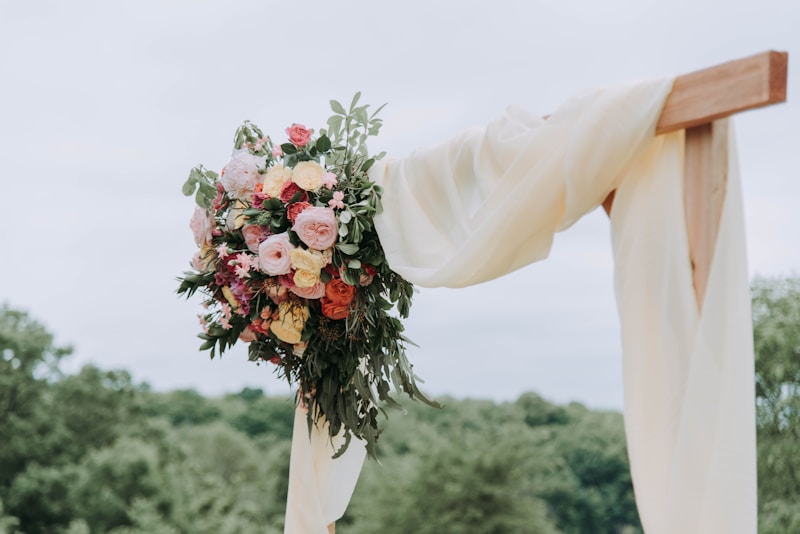Cultural Influence on Wedding Color Choices: A Global Perspective
Understanding the Significance of Color in Weddings
Weddings are one of the most significant events in a person’s life, symbolizing love and commitment. However, the colors chosen for weddings can vary dramatically based on cultural backgrounds, traditions, and even regional preferences. In this article, we will explore how cultural influences shape wedding color choices across the globe, delving into the meanings behind specific colors and how they affect the overall wedding ambiance.
The Psychology of Color in Weddings
Colors have an inherent psychological impact on our feelings and perceptions. In the context of weddings, specific colors can symbolize various emotions, traditions, and cultural narratives. For instance, white is often associated with purity and new beginnings in Western cultures, whereas red represents prosperity and good fortune in many Asian cultures. Understanding these associations is vital for couples looking to create a wedding that not only reflects their personal aesthetic but also honors their cultural heritage.
Color Meanings Across Different Cultures
| Culture | Color | Meaning |
| Western | White | Purity, Innocence |
| Chinese | Red | Good Fortune, Joy |
| Indian | Gold | Wealth, Prosperity |
| Spanish | Purple | Royalty, Tradition |
| Japanese | Cherry Blossom Pink | Blooming Life, Fragility |
Regional Variations in Wedding Colors
As we look closer at specific regions, we can see distinct variations in preferred wedding colors and their significance. Each region boasts rich traditions that strongly influence color choices at weddings.
North America
In the United States and Canada, traditional wedding colors have leaned towards white and pastels. The classic white dress has become a symbol of a traditional Western wedding fairy tale. However, modern couples are increasingly experimenting with bold hues like royal blue, burgundy, and even black, reflecting their personal styles and preferences.
Asia
Cultural significance plays a major role in Asia, particularly in countries like China, India, and Japan. In China, red Wedding dresses are popular, as red symbolizes happiness and prosperity. On the other hand, Indian weddings often feature vibrant colors like marigold yellow, deep red, and rich green, reflecting the cultural celebration of life and festivity. In Japan, while traditional Shinto weddings may include white, colorful kimono garments are also used, representing beauty and joy.
Europe
In Europe, colors can vary considerably from country to country. In countries like Italy and Spain, deep reds and purples dominate, symbolizing richness and abundance. Scandinavia may favor softer shades, emphasizing the natural beauty of the surroundings. Moreover, the presence of seasonal trends can influence color choices, leading to a vibrant palette during the spring and summer months.
Modern Influences on Wedding Color Trends
In today's interconnected world, cultural boundaries are increasingly blurred, leading to a fusion of traditional and modern practices. Social media platforms like Instagram and Pinterest have allowed couples to explore diverse styles and color schemes from around the world, leading to hybrid weddings that blend multiple cultural influences.
Breaking Traditions
While many couples respect traditional color choices rooted in their heritage, others choose to break away from conventions. This movement towards personalization allows couples to express their unique identities. The color palette is often a reflection of not just cultural influences but also personal stories, favorite colors, and themes that resonate with the couple's journey.
Choosing the Right Colors for Your Wedding
When selecting colors for a wedding, several factors should be considered:
- Personal Preference: Ultimately, the couple’s perspective and style should take precedence. Choose colors that resonate with both individuals.
- Cultural Significance: If either or both partners have strong cultural ties, it's beneficial to explore color meanings and their importance in respective traditions.
- Seasonality: The time of year can heavily influence color choices. For example, spring colors may include soft pastels, while autumn can inspire richer, warmer hues.
- Venue Compatibility: Consider how colors will complement the chosen venue. A beach wedding may call for lighter, airy shades, while a formal venue may warrant deeper, more luxurious colors.
Celebratory Themes and Their Color Palettes
The theme of your wedding can also dictate the colors used throughout the ceremony and reception. Here are a few popular wedding themes and their corresponding color suggestions:
Rustic wedding Theme
For a Rustic wedding, think earthy tones like brown, sage green, and burnt orange. These colors reflect the natural beauty of the countryside and can create a warm, inviting atmosphere.
Beach Wedding Theme
A beach wedding can be enhanced with colors like aqua, coral, and sandy beige. This palette echoes the beach environment and creates a relaxed vibe.
Elegant Formal Theme
For a more sophisticated look, consider jewel tones like emerald green, sapphire blue, and deep burgundy. These colors can add a touch of luxury and elevate the overall aesthetic.
Conclusion: Embracing Cultural Diversity in Wedding Colors
As we have explored, the cultural influence on wedding color choices is profound and far-reaching. Couples today have the opportunity to honor their roots while also embracing modern trends, helping to create a unique wedding experience. Whether you choose to follow traditional color meanings or opt for a more personalized palette, reflecting your journey and love story can make your wedding day even more special.
As you plan your wedding, consider embracing your heritage, consulting with family, and researching the cultural significance of colors. Remember that while tradition plays an essential role, your special day should ultimately reflect who you are as a couple. Happy planning!
